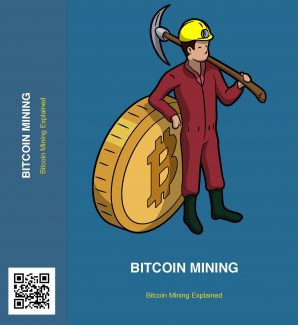
 License Type: Personal Use
License Type: Personal Use  File Type: ZIP
File Type: ZIP
 SKU: 61731
SKU: 61731  Shipping: Online Download
Shipping: Online Download
Sample Content Preview
Introduction
It is no longer news that the adoption of digital currencies as a means of making payment is rapidly gaining momentum around the world. Bitcoin, which is the first example of the growing category of money known as the cryptocurrency, is the most popular and widely accepted of them all. Bitcoin is a peer-to-peer electronic cash system that was invented by a software developer called Satoshi Nakamoto, and it is currently taking the lead amongst other digital currencies. It is an electronic payment system based on mathematical proof that is created and held electronically. Bitcoin is also a decentralized form of cryptocurrency that is independent of any central authority – meaning, there is no single institution controlling the Bitcoin network.
This eBook is going to help you go beyond a basic understanding of Bitcoin and the mining of it. When you are finished reading, you’ll be ready to get started mining Bitcoins today!
What is Bitcoin Mining?
In traditional fiat currency systems, money is printed by the government and released into circulation whenever it is needed. Bitcoins, on the other hand, aren’t printed, rather they are mined. Computers around the world ‘mine’ for coins by competing with each other using software that solves mathematical problems.
Bitcoin is mined by people, and increasingly, businesses using computing power in a distributed network. It can be transferred electronically and costs very little in transaction fees. The first groups of people to stake their claim in Bitcoin mining were cypherpunks, cryptographers, technically-minded libertarians and multi-talented hackers.
Miners get rewarded in Bitcoins for each new block that they discover and for every transaction that gets finalized. Bitcoin mining usually involves two main aspects; these are: confirming transactions to the blockchain and introducing new Bitcoins to the system.
The blockchain is normally kept in a chronological order to provide the proof needed to complete transactions. Hence, it makes it extremely difficult and nearly impossible to undo transactions because it will require new proof on not just one block, but on all the others.
The network is programmed in such a way that when two blocks (or pending transactions) are found simultaneously, the entire Bitcoin network works on the first block they’ve found. It follows a one-block-ata- time process so that no new block is solved until the penultimate block has been finalized. Then, whoever solves the block gets rewarded with Bitcoins.
The process of solving subsequent blocks continues on to the next block, and it keeps going on and on in circles with a reward for each successful block that gets finalized.
As the mining population increases in the field, there is a proportionate increase in the difficulty of finding new blocks. This difficulty is enhanced because the network is always wanting to ensure that the average time for miners to find a block is limited to 10 minutes. Hence, there is an inherent cutthroat competition lingering among the miners because they only have 10 minutes to finalize their transactions. With this rule actively in place, no one person can control the blockchain, rather, a series of miners get to finalize transactions.
Bitcoin Mining Terminology
To begin your journey into Bitcoin mining, you will need to run software with specialized hardware. We will go into further details about this in the next few chapters. But first, we are going to explain how Bitcoin mining works by defining the basic technical terms that are commonly used in mining. These terms include:
Block:
A block is a group of Bitcoin transactions that are collected during a set period from current pending transactions. These transactions are usually entered into an ever-growing list of blocks, also known as the blockchain, by the miner. It is clearly visible to everyone who is a part of the Bitcoin network. It is estimated that a new block is created on average every ten minutes.
Proof of Work Hashing:
This is the function which miners perform to define a new block. It is usually done to ensure that the Bitcoin blockchain is functioning properly. Miners compete with each other to solve a cryptographic "puzzle," known as a hash, by using raw computational power. When a miner correctly hashes the current block, he successfully solves the "puzzle," thus proving his investment of work. He is then rewarded with a certain number of newly-created Bitcoins.







